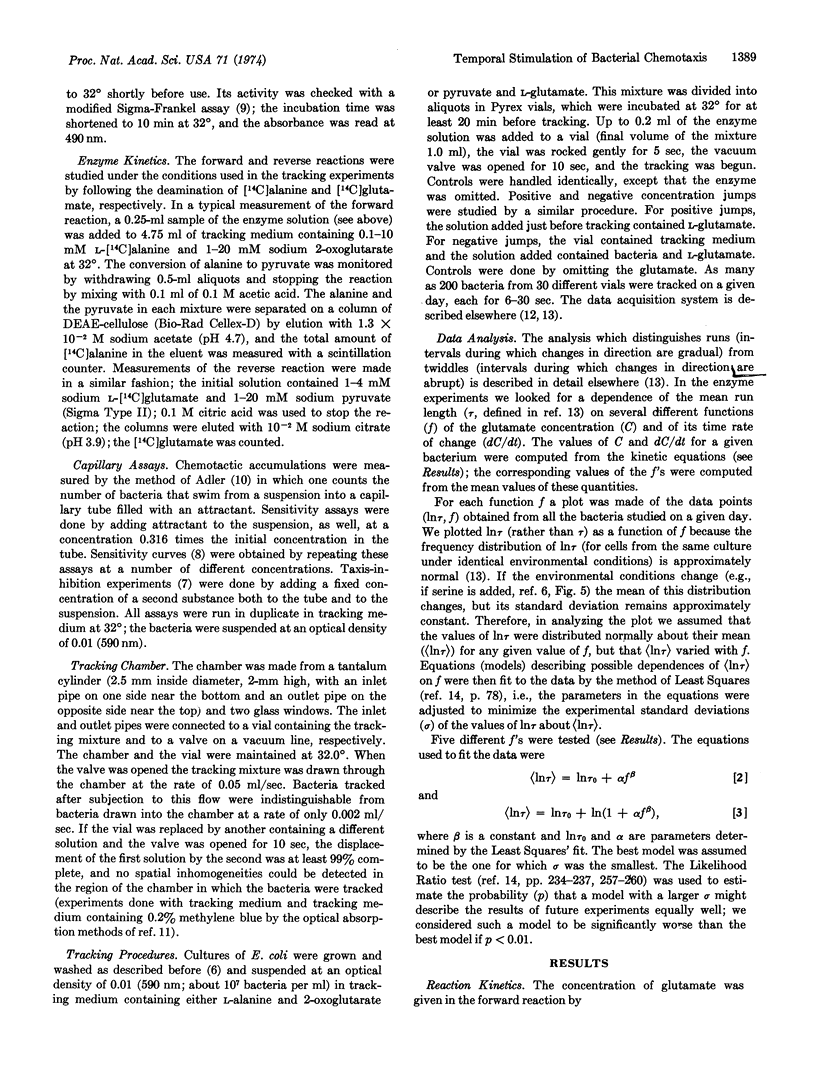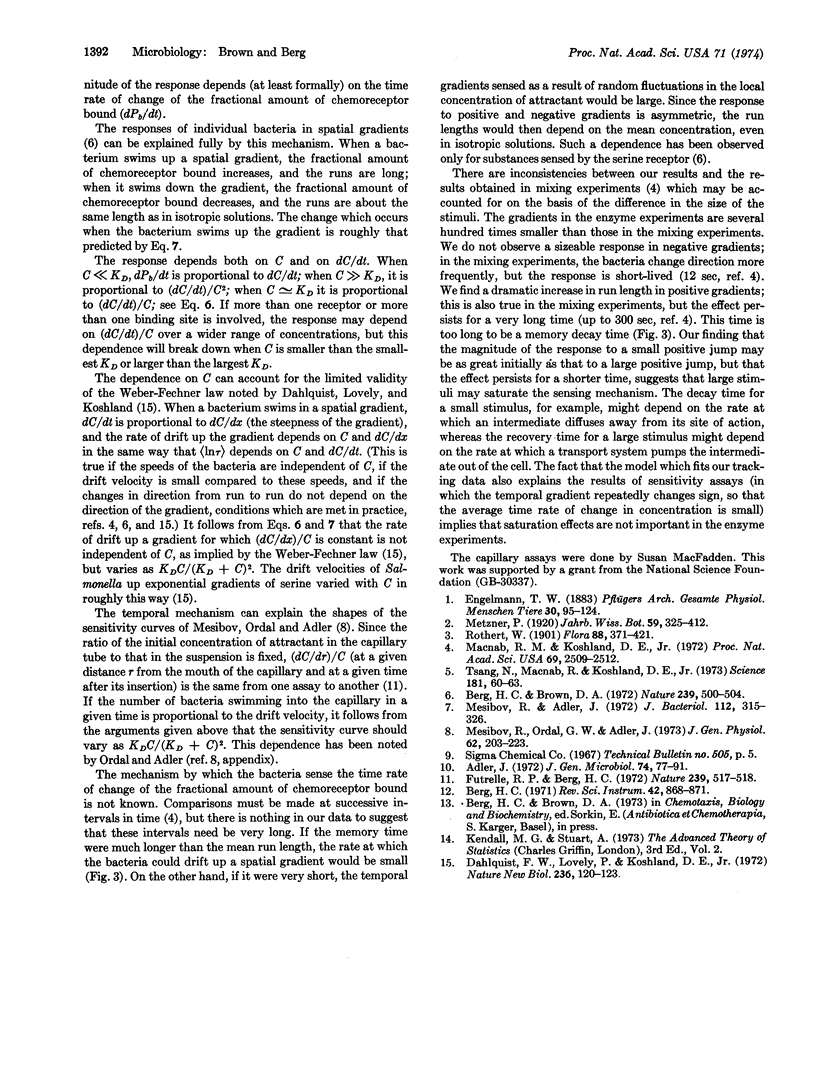Abstract
We used the tracking microscope to study the chemotactic responses of E. coli to temporal gradients of L-glutamate generated in isotropic solutions by the action of the enzyme alanine aminotransferase. Positive gradients suppress directional changes which occur spontaneously in the absence of a stimulus. Negative gradients have little effect. The data can be fit with a model in which the suppression is proportional to the time rate of change of the fractional amount of chemoreceptor bound. The model accounts for the behavior of individual cells and populations of cells in spatial gradients. A computer simulation of the motion in spatial gradients indicates that if the bacteria have a “memory,” its decay time cannot be much longer than a few seconds. The relationship between the responses observed in these experiments and in experiments in which solutions of an attractant at different concentrations are mixed is discussed.
Keywords: bacterial taxis, temporal gradients, alanine aminotransferase, three-dimensional tracking
Full text
PDF




Selected References
These references are in PubMed. This may not be the complete list of references from this article.
- Adler J. A method for measuring chemotaxis and use of the method to determine optimum conditions for chemotaxis by Escherichia coli. J Gen Microbiol. 1973 Jan;74(1):77–91. doi: 10.1099/00221287-74-1-77. [DOI] [PubMed] [Google Scholar]
- Berg H. C., Brown D. A. Chemotaxis in Escherichia coli analysed by three-dimensional tracking. Nature. 1972 Oct 27;239(5374):500–504. doi: 10.1038/239500a0. [DOI] [PubMed] [Google Scholar]
- Berg H. C. How to track bacteria. Rev Sci Instrum. 1971 Jun;42(6):868–871. doi: 10.1063/1.1685246. [DOI] [PubMed] [Google Scholar]
- Dahlquist F. W., Lovely P., Koshland D. E., Jr Quantitative analysis of bacterial migration in chemotaxis. Nat New Biol. 1972 Mar 29;236(65):120–123. doi: 10.1038/newbio236120a0. [DOI] [PubMed] [Google Scholar]
- Futrelle R. P., Berg H. C. Specification of gradients used for studies of chemotaxis. Nature. 1972 Oct 27;239(5374):517–518. doi: 10.1038/239517a0. [DOI] [PubMed] [Google Scholar]
- Macnab R. M., Koshland D. E., Jr The gradient-sensing mechanism in bacterial chemotaxis. Proc Natl Acad Sci U S A. 1972 Sep;69(9):2509–2512. doi: 10.1073/pnas.69.9.2509. [DOI] [PMC free article] [PubMed] [Google Scholar]
- Mesibov R., Adler J. Chemotaxis toward amino acids in Escherichia coli. J Bacteriol. 1972 Oct;112(1):315–326. doi: 10.1128/jb.112.1.315-326.1972. [DOI] [PMC free article] [PubMed] [Google Scholar]
- Mesibov R., Ordal G. W., Adler J. The range of attractant concentrations for bacterial chemotaxis and the threshold and size of response over this range. Weber law and related phenomena. J Gen Physiol. 1973 Aug;62(2):203–223. doi: 10.1085/jgp.62.2.203. [DOI] [PMC free article] [PubMed] [Google Scholar]
- Tsang N., Macnab R., Koshland D. E., Jr Common mechanism for repellents and attractants in bacterial chemotaxis. Science. 1973 Jul 6;181(4094):60–63. doi: 10.1126/science.181.4094.60. [DOI] [PubMed] [Google Scholar]


